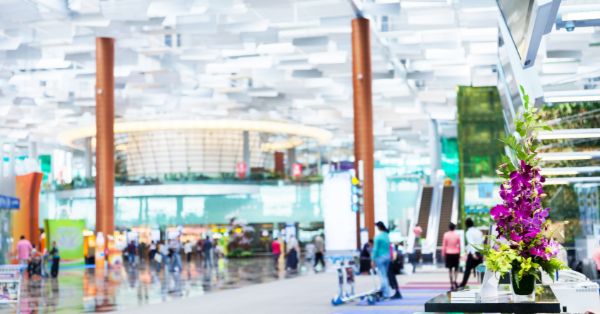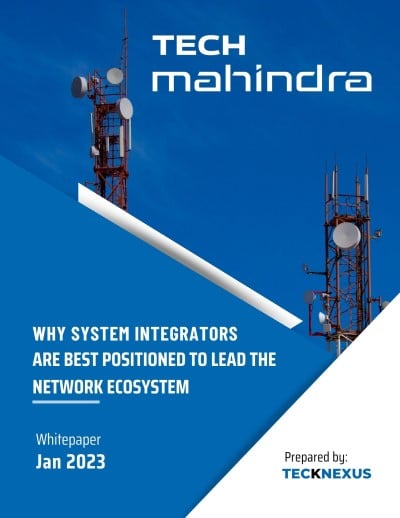Airports are no longer just gateways to the skies — they’re becoming smart cities in miniature, orchestrating vast networks of people, vehicles, cargo, and infrastructure under intense time pressures and ever-higher passenger expectations. Behind this evolution is a growing recognition that connectivity, robust, resilient, and pervasive, is the glue that binds modern airport operations together.
While travelers may experience connected aviation through better Wi-Fi or mobile boarding passes, the real story is about building a digital nervous system that unites landside, terminal, and airfield operations into a single, responsive ecosystem. This is what sets leading airports apart: not just adding gadgets, but weaving connectivity into the daily fabric of operations. This article unpacks how some of the world’s most advanced hubs are doing it, highlighting what works, what challenges arise, and what lessons any airport can adapt.
Connected Aviation: Beyond WiFi The New Connectivity Imperative
In the early days of airport digitization, the push for better connectivity focused mainly on passenger expectations: travelers demanded free Wi-Fi, fast downloads, and mobile apps for boarding passes and gate alerts. But modern airports know that real ROI in connectivity doesn’t stop with passenger devices; it runs deep into the operational core.
A comprehensive connectivity roadmap now covers everything from smart parking and curbside traffic management to terminal check-in automation and airside vehicle tracking. On the landside, this means sensors that guide drivers to available parking spaces, real-time updates for rideshare pick-ups, and connected traffic lights that optimize flow. Inside the terminal, connectivity powers touchless biometric gates, queue management cameras, and live digital signage that adjusts based on crowd density. Airside, connectivity becomes mission-critical: real-time tracking of ground support vehicles, connected refuelers, de-icing trucks, and perimeter drones all rely on robust networks. Without this invisible backbone — often built on a blend of private LTE, 5G, Wi-Fi 6, and secure fiber — the promise of truly connected aviation remains just that: a promise.
Connected Aviation Inside the Terminal: Smarter Passenger Flow
A prime example of this vision is Changi Airport in Singapore, which has become a global showcase for passenger experience and operational excellence. But what many travelers don’t see is the sophisticated digital layer under the surface that makes this possible. Across its terminals, Changi has deployed thousands of IoT sensors and smart cameras that monitor passenger movements, wait times, and queue lengths in real time. These insights feed advanced AI tools that predict crowd surges before they happen, prompting proactive decisions: opening more security lanes, redirecting passengers to quieter checkpoints, or updating flight information displays dynamically to smooth flows.
Biometric gates at immigration and boarding replace manual document checks, speeding up passenger movement while maintaining tight security. Behind the scenes, connected baggage systems with RFID tracking follow each bag from check-in to aircraft hold, cutting misrouted luggage to near-zero. For the traveler, it all feels seamless: shorter queues, faster boarding, and confidence that their bags will arrive when they do. For the airport, this connectivity means higher throughput, better resource allocation, and a clear edge in a fiercely competitive market for passenger loyalty.
Connected Aviation Outside the Terminal: Real-Time Airside Operations
Once a plane leaves the gate, its safe, timely turnaround depends on a hidden network of connected people and assets working in lockstep outside the terminal. At Amsterdam Schiphol Airport, airside connectivity has become a cornerstone of its reputation for operational precision. Using its dedicated private LTE network, Schiphol’s operations center tracks the location and status of every piece of ground support equipment — from baggage tugs and pushback tractors to catering trucks and fuel bowsers. Operators can dispatch the right vehicle to the right stand in real time, eliminating wasted trips and idle time on the apron.
Beyond vehicles, Schiphol has embedded smart sensors in taxiways, ramps, and runways. These feed live data to monitor conditions like friction, surface temperature, and lighting status. Combined with weather sensors and AI forecasting, this enables rapid decision-making when conditions change, such as deploying snow removal or rerouting taxiways for safety. Together, these airside connectivity layers shrink turnaround times, reduce CO2 emissions by cutting unnecessary vehicle movements, and protect aircraft operations during harsh weather — all powered by a robust, integrated network backbone.
Aviation Inside and Outside the Terminal: Sustainability and Savings
For airports under pressure to cut emissions, connectivity is more than an operational tool; it’s a sustainability enabler. At San Diego International Airport (SAN), one of North America’s leaders in sustainable operations, an integrated network of IoT sensors, smart meters, and edge analytics underpins its award-winning energy strategy. Connected building management systems adjust lighting, HVAC, and escalator speeds based on real-time occupancy detected by motion and temperature sensors.
Meanwhile, airside electric ground vehicles connect to intelligent charging stations that optimize charging schedules for off-peak hours, reducing strain on local grids and cutting operating costs. Data from these connected assets feeds a central command hub, where sustainability teams monitor carbon impact in real time, fine-tune building performance, and benchmark progress for green certifications like LEED and Airport Carbon Accreditation. The results speak for themselves: lower utility costs, reduced carbon emissions, and clear evidence that every dollar invested in smart connectivity pays back in environmental and reputational value.
Inside and Outside the Terminal: Breaking Silos with Connected Aviation
One critical insight from real airport case studies is that even the best connectivity roadmap is useless if data doesn’t flow across organizational lines. Airports are traditionally siloed environments: operations, security, retail, maintenance, and airline partners often work in parallel but don’t always share real-time information. Modern connectivity solutions and the culture shift they demand are changing this.
At leading hubs, cross-functional control centers now bring together stakeholders from airlines, ground handlers, police, fire services, and facility managers, all working off the same integrated dashboards fed by live IoT data. Teams can coordinate instant decisions, whether that’s rerouting passenger flows due to a gate change, redeploying baggage crews to high-demand belts, or responding to an airside incident before it escalates.
Equally important is the human element: airports like Changi and Schiphol pair technology investments with staff training and change management programs. Teams learn how to interpret data, trust AI recommendations, and collaborate across functions. By combining digital tools with human agility, they unlock the full strategic advantage of being truly connected — and break the age-old habit of working in disconnected silos.
Inside and Outside the Terminal: Practical Lessons for Any Airport
For airports still mapping their connectivity journeys, these real-world examples offer actionable lessons. First, leaders must identify their biggest friction points — whether it’s inconsistent baggage tracking, inefficient boarding, or unpredictable curbside traffic — and focus pilot projects on solving them. Small wins build confidence and unlock investment for bigger, bolder initiatives.
Second, scalability must be part of the plan from day one. A patchwork of isolated digital tools won’t deliver full value if they can’t integrate or grow as passenger numbers rise. Airports should design their connectivity architectures — private 5G, edge computing, or secure cloud — to handle tomorrow’s data volumes and use cases.
Third, industry leaders emphasize partnerships: involving airlines, ground handlers, regulators, and technology vendors early ensures buy-in and alignment. Clear governance around data sharing, cybersecurity, and operational accountability avoids surprises later. Above all, successful airports see data not as a by-product but as an asset to be mined for operational, commercial, and sustainability advantage.
The Path Ahead: Preparing for Truly Connected Aviation
As global hubs prove every day, connected aviation is not speculative — it’s happening now. Passenger numbers are rebounding, supply chains are more complex, and new technologies like autonomous vehicles, swarm drones, and predictive maintenance bots are ready to scale. But all these innovations rely on one thing: an invisible, secure, always-on connectivity backbone.
Inside the terminal, outside on the apron, at the fence line, and in the control room — airports that embed robust connectivity into every layer will stand out as resilient, efficient, and passenger-focused. They’ll be better prepared for unexpected surges, climate disruptions, or evolving security demands. Just as importantly, they’ll inspire travelers with smoother journeys and deliver confidence to stakeholders and airline partners that their hub is built for the next era of aviation.
For decision-makers, the message is clear: don’t wait for connected aviation to arrive. The roadmap is here, the technology is proven, and the payoff is real. Now is the time to plan, pilot, and expand — connecting every zone, every asset, and every team into a smarter, safer, more sustainable whole.
Explore More from the Connected Aviation Series
Continue your journey into the world of smart, connected airports with our in-depth Connected Aviation series:
-
Why Private Networks Are the Future of Smart Airports — Understand why dedicated connectivity is critical for modernizing airport operations, passenger experiences, and safety systems.
-
How IoT and Digital Transformation Power Smart Airports — Explore how sensors, real-time data, and integrated platforms drive operational efficiency from curb to gate.
-
How Autonomous Systems Are Automating Airports — Dive into the role of autonomous vehicles, robotics, and smart logistics in future-ready terminals.
-
Inside and Outside the Terminal: A Case Study — Get an insider look at how connected systems transform landside and airside operations for airports big and small.
-
Benefits of Private Networks and Smart Airports — See the real-world benefits of deploying robust, dedicated networks to enable scalable digital transformation.
Strengthen Your Connected Aviation Strategy
Get practical insights on deployment models, operational use cases, and how connected aviation enhances safety, sustainability, and passenger satisfaction. Align your roadmap with best practices for IoT integration, private 5G, autonomous systems, and digital platforms powering smart airports globally.
-
Access More Aviation Use Cases & Deployment Insights: Private Network Deployment & Use Cases
-
Discover Related Industry Innovations: Aviation & Connected Industries
-
Explore TeckNexus Solutions for Aviation & Beyond: TeckNexus Solutions























